By Pete Vack
As Graham Gauld has written, Gordini’s racing prior to the 1950s was both significant and interesting. Here we’ll take a look at a few of the prewar Simcas modified by Gordini.
While he had not yet given his name to his cars, Gordini’s modifications to the Balilla Sport, the Simca Cinq (Fiat Topolino) and the Simca Huit were very successful – in fact one might argue Gordini was almost as successful before the war as he was after!
Although having established his Suresnes Fiat garage in about 1927, Gordini didn’t gain much traction until 1935, when the Balilla began to come into France in numbers. Before that, Gordini had struggle to derived speed from the Fiat 514, introduced in 1929. It was a solid if not stellar replacement of the 509; with 1438cc, the four cylinder flathead would allow the production car about 55 mph. More or less representing Fiat, Gordini prepared a 514 Torpedo much like the one in the photograph, to enter the Course de cóte de Suresnes, a trial up the Mont Valérien. The prize was given to the slowest car! Not only that, he won the event in both 1933 and 1934, gaining him the title “The King of Slow Drivers”. But even then, Gordini realized that any publicity was usually good publicity.

The 1438cc Fiat 514 of 1929 was a slow car, but not perhaps as slow as it was made out to be by Gordini. Fiat photo.
Things were to change rapidly for Gordini, who happened to be a the right place and the right time with the right friends, the first being 55 year-old Angelo Molinari, whose dance as sports complexes were all the rage. Gordini enjoyed dancing, Molinari was a Fiat customer, and a friendship ensued. At almost the same time, in November of 1934, H.T. Pigozzi formed Sté Industrielle de Mécanique et Carrosserie Automobile, SIMCA for short. In came the brand new Balilla Sport Spider, the first small sporting car to be assembled and marketed in France. Young-at-heart Molinari had to have one, and soon Gordini was allowed to “do whatever he liked to make it go as fast as possible for the forthcoming 1935 season.” (Blight) Life would never be the same for Gordini; he saw his chance and took full advantage of the opportunity.
1935
Gordini began by preparing Molinari’s 1100cc Balilla for competition, but in fact his initial modifications made the car slower. But work at both Fiat and Gordini’s garage improved the Balilla to such an extent that outside of France, the new Simca product became known through the efforts of Gordini’s distinctively modified cars. By the time of the 24 hour Bol d’Or on May 18-19 1935, Gordini was ready with a revised Balilla, with an aluminum body, better gear ratios, and higher compression ratio.
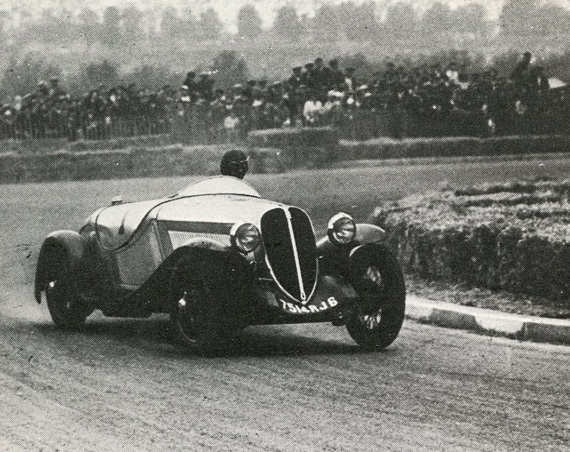
This is the famous 7514-RJ-6, the Molinari Balilla after being modified by Gordini. Here Gordini and the car are on the way to a class win at the GP D'Orleans in 1935. Fiat photo.
But Molinari didn’t show up and Gordini was allowed to drive the car instead. He won the touring category with Molinari’s car. Gordini had proven himself a race-car-wizard and driver all in the same long 24 hours. It also brought him to the attention of the new Simca firm, who awarded him 20,000 francs. Next he was off to the Grand Prix of D’Orleans, where he again placed 1st in the 1100cc class. The car retired at Le Mans but by the end of 1935, Gordini would take the Balilla originally intended for Molinari to five wins out of seven starts. Not bad for an upstart.
1936
By 1936 he had a full team of modified 508S Spiders, and this time he took a first in class at Le Mans. Gordini was on a roll and his fame and fortune grew with continued support from Simca and a long series of class victories. But the 508S was aging and Gordini was itching to create a car of his own. Where the Simca stops and the Gordini begins now becomes moot.
1937
This year saw the introduction of the Simca version of the 500cc Topolino; Gordini created special versions of the Topolino to use in both 500 cc, 750 cc, touring and sport classes. Also called Simca Cinqs, they were reasonably successful, with several wins in the 750cc class including Le Mans from 1937-1939. Late in 1937 several of the Balillas were transformed from a sports car into a streamlined, lightweight special. All the Simca Gordini models shared six class wins and four first overalls between them.
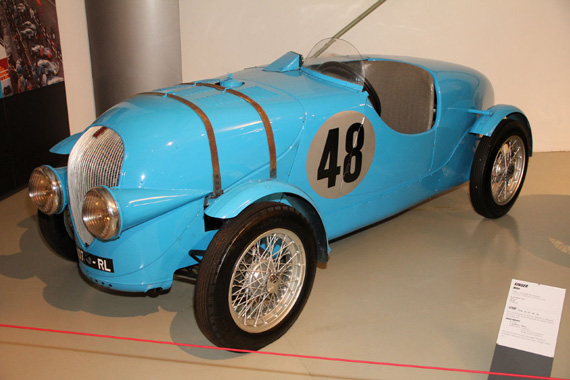
And this little fella is the Fiat Topolino/Simca Cinq by Gordini. This car won the 750cc class at Le Mans in 1938 and 1939. Photo by Hugues Vanhoolandt.
1938
Another successful season as the 508S continued to be campaigned as an open sports car along with the streamlined versions, including chassis number 823-885 T5 shown here. Also still in the fray for Gordini were the Cinq streamliners, and between them they shared nine class wins.
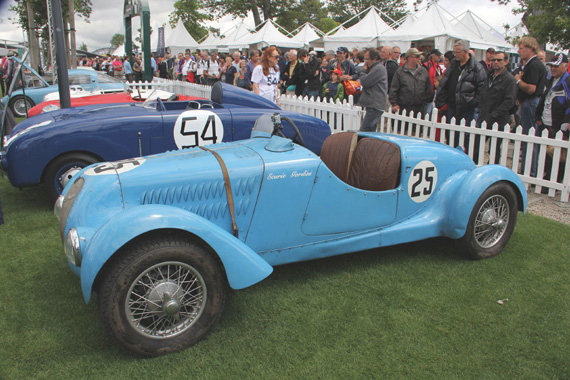
The streamlined version of the Simca Huit by Gordini created in late 1937. This is chassis 823 885 which was first in class at Bol d 'Or on June 6th 1938. Photo by Hugues Vanhoolandt.
1939
The last year before the war, Gordini and Scaron, driving the now- famous streamlined Simca Huit chassis number 810404, not only won the 1100cc class but the Coupe Bienale. They had started the year by winning the 1500cc class in the Monte Carlo Rally, and Gordini modified cars achieved class wins again at La Turbie, the Ralley Olazur, the Coupe de Paris at Montlhery, the Bol d’Or, the Grand Prix of Reims, and finally on August 6th the Grand Prix of Comminges.
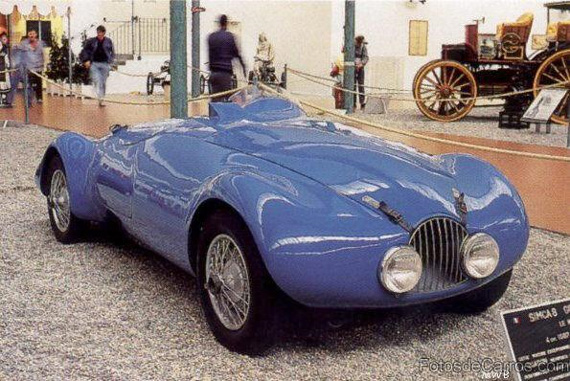
The famous Simca Huit Gordini 810404 T8 which won the Index and class at Le Mans in 1939. Many of the Gordinis were purchased by the Schlumpf brothers from Gordini himself in 1957 for their museum. Internet photo.
Notably, Le Mans veteran woman driver Anne Itier was a Simca Gordini enthusiast, taking the French blue to Crystal Palace in the U. K. in 1938, according to Jean-Francois Bouzanquet’s book, “Fast Ladies” (Veloce Publishing); we wish to thank Mr. Bouzanquet for his permission to publish the Itier photo which clearly shows her behind the wheel of a Simca Gordini.
Gordini had been doing what he loved to do since 1935; he knew this was his calling, and became very successful long before his post war racing with sports and Grand Prix cars. Imagine, then how he must have felt when his world came tumbling down on September 1st, 1939.
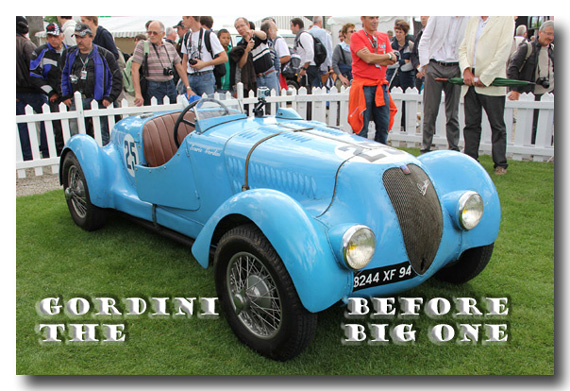
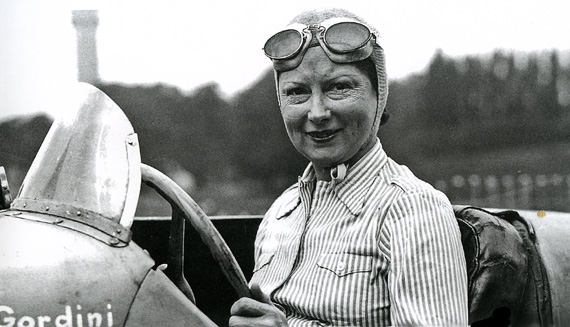
Interesting items, for the full story , see my latest work AMEDEE GORDINI- a true racing legend. Its available this month. 350+ images 280+ pages.
I remember being driven in a Renault 5 Gordini and a slew of Dauphine Gordinis in Chile and Argentina.